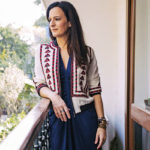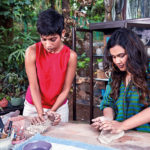India Mahdavi – Life in Technicolor
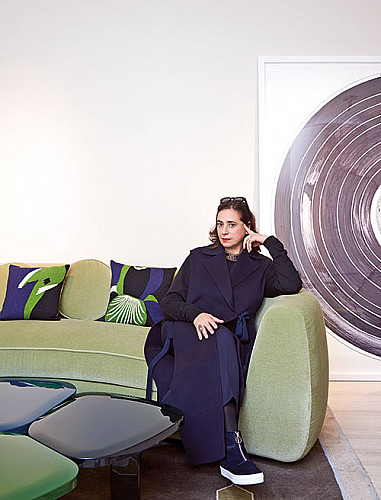
When India Mahdavi was asked to design a gallery restaurant in London’s Sketch complex that would display 239 black-and-white drawings by artist David Shrigley, her answer was pink — from the walls, to the chairs and banquettes. Naturally.
Whether it is the first RedValentino store in London, Ladurée in Geneva or its newly opened second outpost in Los Angeles, it becomes clear that colour is Mahdavi’s weapon of choice. There is something uncanny about how she is able to put two shades — that one would have thought had no business being together — in the same room. ‘I like putting colours in danger’, she has explained, when asked about her daring chromatic choices. She approaches spaces like one would couture — each is unique, specific to its location and never to be replicated. There is always a feeling that something is slightly ‘off’, but somehow it all makes sense because of the right elements. Pieces are not designed to ‘match’ but quite the opposite, finding order in the brink of chaos.
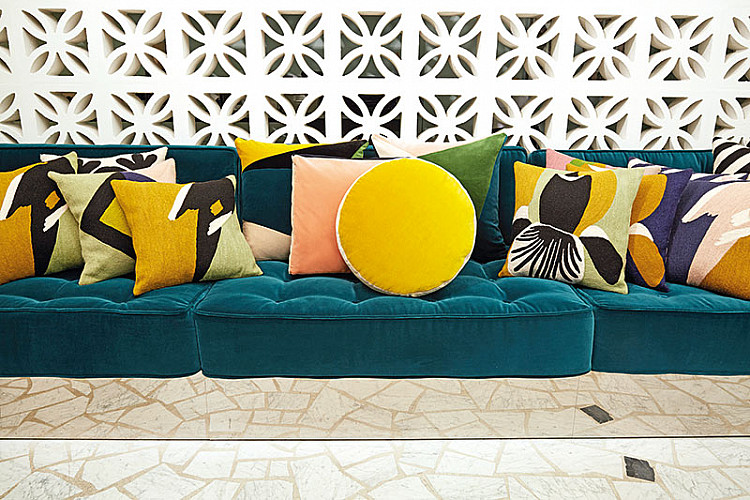
It’s no coincidence then, that Mahdavi is named after a country that is no stranger to pinks, or any hue for that matter. While she personally prefers neutral or dark shades and comfort clothing, it is her effervescent personality and eclectic upbringing that have led to spaces that are bold, feminine and distinctive. Born in Tehrain, 55-year-old Mahdavi grew up in the USA, Germany and France, and has studied design at École des Beaux-Arts in Paris, as well as the School of Visual Arts and Parsons in New York. In 1999, she struck out on her own and today runs her studio and showroom on Rue Las Cases in the French Capital.
Verve caught up with the ‘queen of colour’ in Paris on the eve of launching her Talisman Table for LouisVuitton’s Objets Nomades series, which was introduced at Milan Design Week last month. Inspired by Mediterranean traditions and hospitality, the side table features a portable, leather-covered base that unfolds like a book and a removable tabletop whose ‘benevolent eye’ pattern is created in leather marquetry.
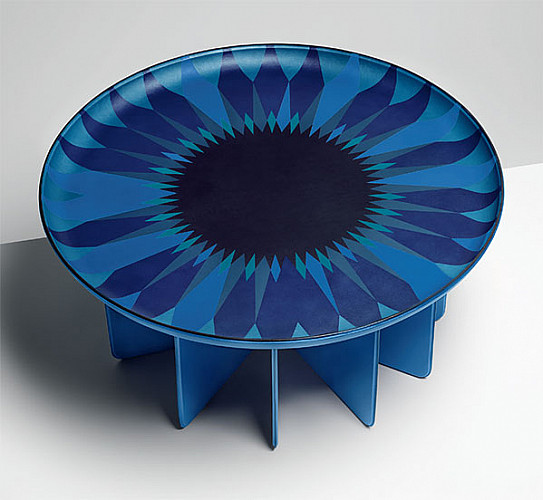
India Speak:
I’m a nomad. I love movement and I think happiness is closely connected to an open, cosmopolitan mind. My life is all about melting pots, mixes, colours, exchanging and sharing. The idea that luxury can be defined through a design exercise (like Objets Nomades), hand in hand with the best craftsmen, is what I have always supported.
Colour has always been very natural for me. I didn’t know it, but when I started embracing my career in interior design, I was always attracted to coloured fabrics and I just managed to put them together. Now, when I think about it, I grew up in Cambridge, Massachusetts in the mid-’60s and my first memories are very much linked to Technicolour — watching those cartoons on television.
How our minds work is very funny because you’re not conscious of your memories and how you’re using and processing the information from them, but they remain somewhere in your brain. We’re always trying to find some kind of relation with our past, our childhood…and I think that is very important.
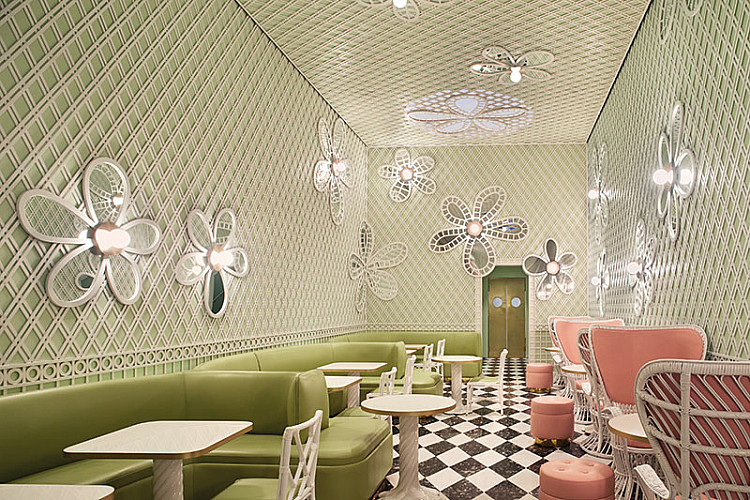
I come from a more Oriental background. And although I’ve never lived in Egypt or Iran, I know those two countries reasonably well. I know that Iran has a long history of colour and patterns and the way they mix them together. That’s my heritage.
There is my family’s heritage and my personal heritage and what I’ve done with it — my sensitivity and how I translate that into what I do. All those elements that you don’t necessarily see, but you can feel them — that comes with being generous with colours, shapes and comfort.
I don’t think I should be giving any advice to Indians because they are the masters of colour! You have Holi, which is a celebration of colour. The only thing I can say is that sometimes I feel it’s a pity that Indians follow an Occidental way of furnishing, when their own heritage is really beautiful. I think you should be integrating your own elements rather than trying to follow any kind of international standard.
There was design in my life without my knowing it. When I was young, I was always building these cabanas — outdoor homes, out of nothing…pieces of wood, branches, with little tree houses. That was my obsession. I would build and break, and then I would rebuild and break it down again. I also went to a very progressive school in the south of France where you could do anything you wanted — from woodwork to ceramics and theatre to dance. I was always building things and doing pottery. You do things, and then you have the consciousness about how and why you want to do them. So you add on the culture, the references, the ‘why it’s such a good idea to do it’ — but at least you do them.
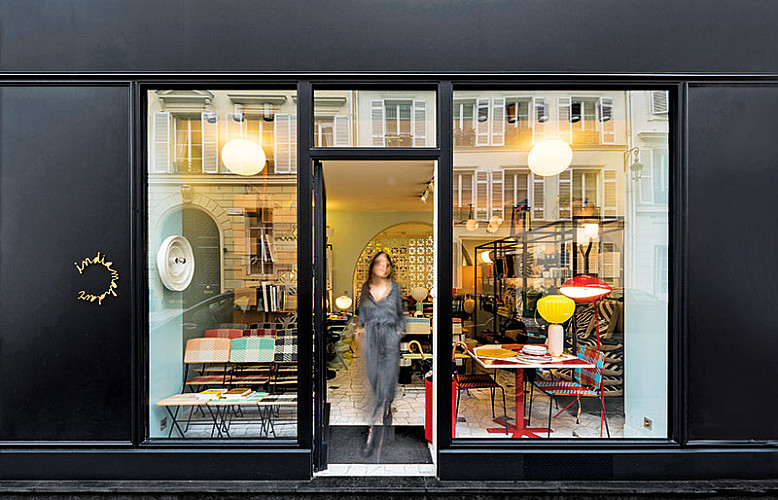
I’m not one to describe my aesthetic because I just do what I do, but I like to say that I’m a polychrome and polyglot. So, polychrome is colourful and polyglot is multi-cultural in a way. I would say also that my aim and what I’m trying to achieve in my work is happiness. It’s how to bring joy to homes and make them better.
Design is about giving function a form, sometimes by freeing the form and sometimes the function.
I don’t like harsh edges. The world is harsh enough. We’re stressed and times are hard. We see a lot of violence; there are so many refugees all over. Seeing things like that is difficult because you have to live with them. I’m lucky that I make my living doing what I love. I’m here to make things a bit softer — things you can touch and feel.
Related posts from Verve:
Verve Trending
Sorry. No data so far.
us on Facebook to stay updated with the latest trends


